Female Ladder-backed Woodpecker
From the Hill Country. Compare with the male, below. Gil provides the following information: Ladder-backed woodpecker: The female has a black crown, and the male has a red crown (with spots). This is a common species found in most of Mexico, and in the U.S. in dry wooded and riparian habitats across the southwest from s.e. California to central Texas.

I love the flaming red head! The golden-fronted woodpeckers preferred to have things to themselves, making it hard to catch with the camera. On this trip the male would buzz through periodically asking politely for everyone else to leave. The rest of the birds, and there were many, declined for the most part. Wimberley, TX, December 2012. Nikon D200 camera & Nikon 300mm f4 lens.
I saw and shot several birds, including the Golden-fronted Woodpecker, for the first time during my spring 2012 trip to the Starry Nights B&B inWimberley, TX. The owners have put up a nice bird blind and have done a fine job in attracting birds. I'm guessing female but expect confirmation soon. One again my buddy Gil provides some great info: Golden-fronted woodpecker, female: In birds, "front" means forehead, or the area in front of the eye and above the bill. The male would have a red, not a gray, crown. This species is a Central American one, found in the U.S. only in west-central Texas up barely into s.w. Oklahoma. It is common, and where their ranges overlap, the Golden-fronted woodpecker hybridizes with its eastern counterpart, the Red-bellied woodpecker. Note your photo of the sitting bird shows well a yellow wash between the legs (this would be red in the Red-bellied woodpecker). I see a single tiny black spot on the rump of the hanging bird, which may mean your bird has some Red-bellied genes. The black spots on the rump are characteristic of Red-bellied, whereas Golden-fronted has a pure white rump.
You can see the golden belly in this shot, though I believe the "front" part of the golden-fronted name refers to the area around the head/beak.
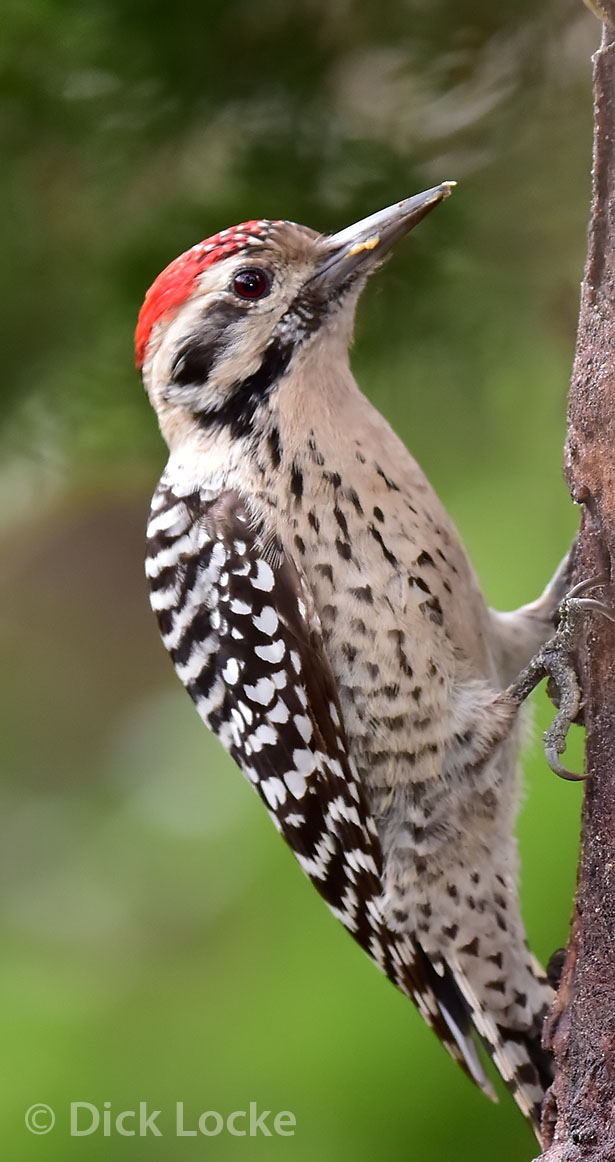
Wimberley, late Fall 2016.

As this one looks slightly away, note the interesting spots on the top of his red head (features characteristic of the male).
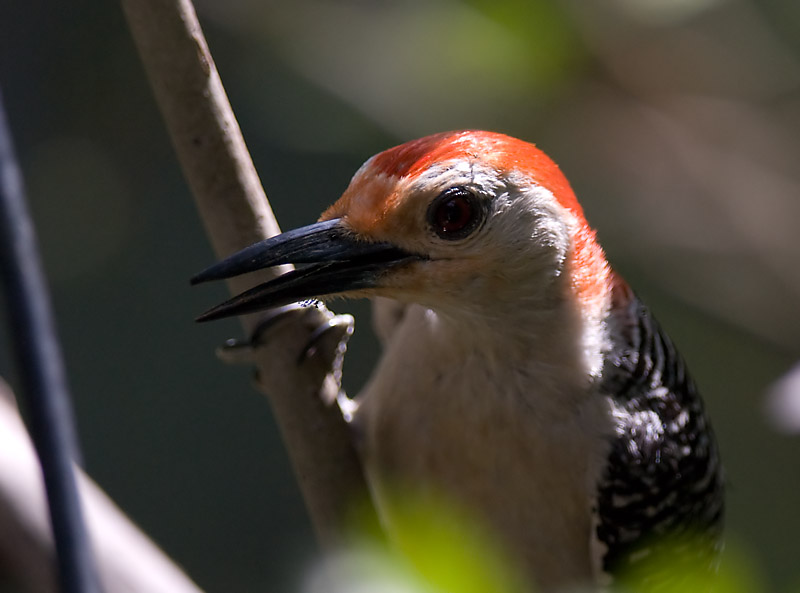
June 2008 from Clute, TX. The consensus between Gil and Christina seems to be this is probably a young adult male molting into adult plumage. Nikon D200 and 300mm f4 ED lens with a monopod in difficult lighting.
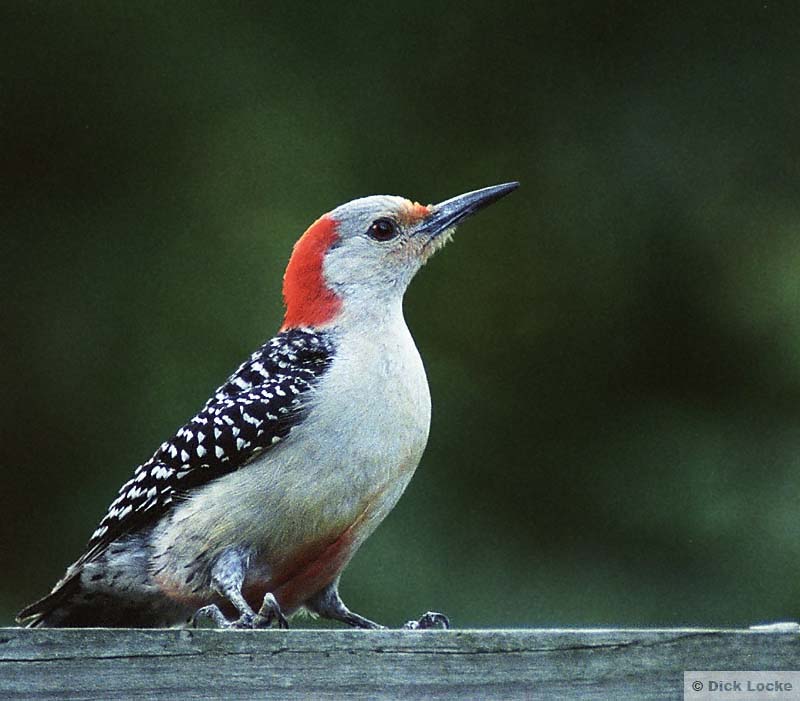
I previously thought it was a Ladder-backed, but have since been informed & verified that it is in fact a Red-Bellied Woodpecker. Fuji 800 print film; Nikon 300mm f2.8 lens with TC-301 2x teleconverter for effective 600mm f5.6. Taken in our backyard. The Woodpecker was on top of the swing set, which gives me a nice background of foliage.
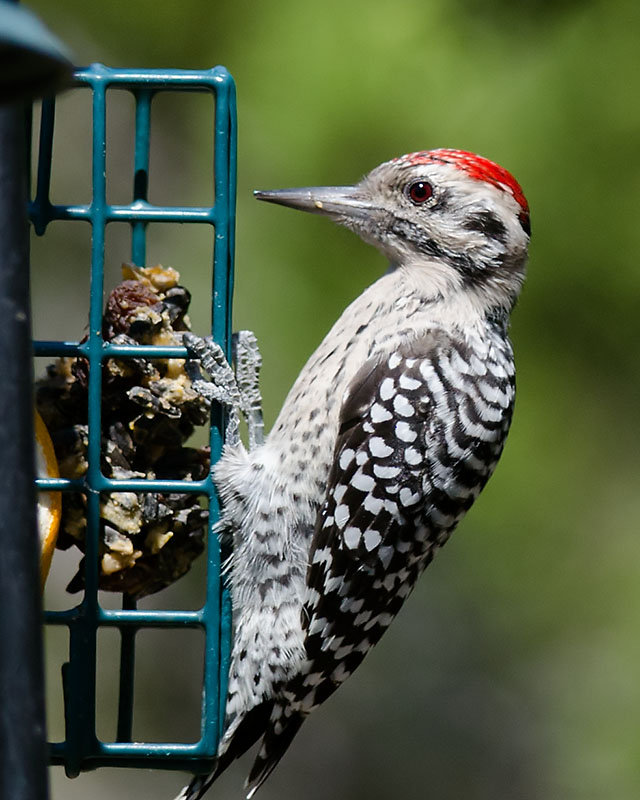

This is the first time I've seen or identified a Downy woodpecker. Not the greatest shot, but the best one of the bunch so far.
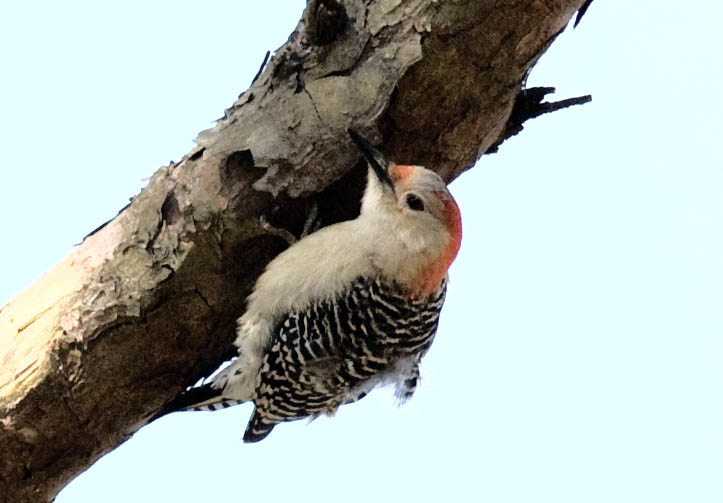
These guys are amazing in their ability to climb up the underside of a branch. This guy is poking into the loose bark on the pine tree, looking for a tasty snack... Photo Notes: Shooting against the bright sky like this is very challenging for the optics. The 300 f4 did very will, but there is still a trace of edge coloration. The bird's fine feathers seem to have introduced some sort of issue causing blue, also. Not sure if that's feathers doing optical tricks or what.
Copyright © by Dick Locke. All Rights Reserved.
Contact and Image Use Information